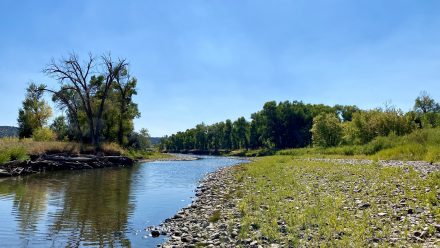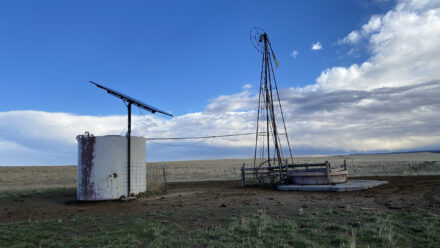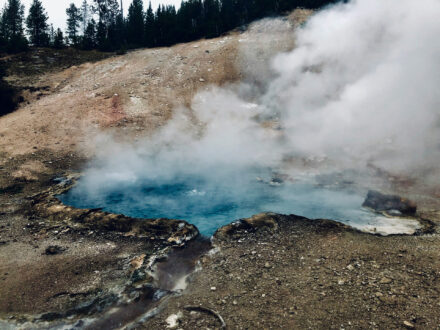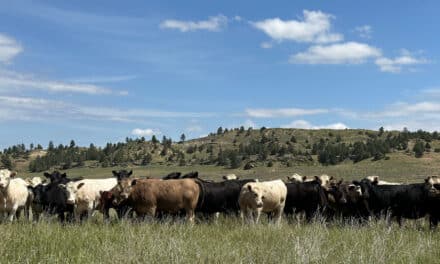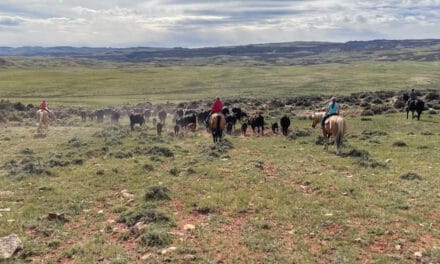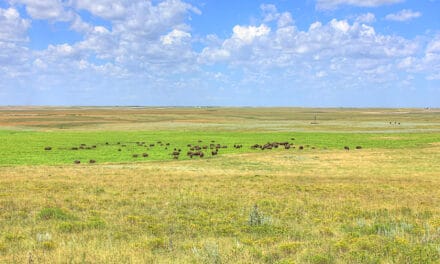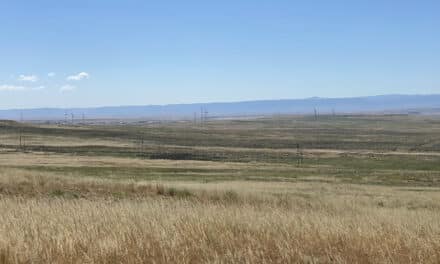In Wyoming and Montana
Introduction
Embarking on the path to land ownership in Wyoming and Montana is a journey filled with promise amidst some of the most breathtaking landscapes in America The land buying venture, while exciting, requires navigating through essential considerations to ensure your aspirations align with the practicalities of owning land. As you dive into this guide, you’ll encounter topics such as water rights, zoning laws, and property taxes, all aimed at providing a clear roadmap for purchasing land in Wyoming and Montana. Our starting point, the vital topic of water rights, sets the stage for a well informed venture into acquiring a piece of the American West. Join us as we explore how to turn the dream of land ownership in Wyoming and Montana into a fulfilling reality.
Water Rights: The Critical Asset
In the semi-arid climates of Wyoming and Montana, water rights are valuable and essential for land usability. The investigation into water rights should encompass verifying their existence, understanding their seniority, and any restrictions imposed. This effort is particularly vital concerning land intended for agricultural purposes, where adequate water rights are crucial for irrigation and sustaining livestock. A thorough assessment must include consultations with water rights experts to understand these rights’ implications on the property’s potential. This comprehensive understanding is essential for maximizing the land’s potential while adhering to state and federal water regulations.
The Essence of Water Rights
Water rights in Wyoming and Montana are governed by the doctrine of prior appropriation, a system that prioritizes water usage based on the chronological order of water claims. This “first in time, first in right” principle means that earlier claims have superiority over those established later, a factor that can significantly affect agricultural operations, residential development, and conservation efforts on the land.
Due Diligence on Water Rights
Prospective buyers must thoroughly investigate the water rights attached to a parcel of land. This involves verifying these rights’ existence and legal standing and understanding their specific limitations, such as seasonal variations in water flow and any shared-based restrictions that might apply. Buyers should seek detailed records from state water agencies, which maintain databases of water rights, including their history, status, and transfer records.
Shared-based Restrictions
Share-based restrictions refer to water usage limitations tied to a person’s shares or ownership interest in a water system, water company, or irrigation district. This approach is used where water rights are managed collectively through cooperative structures like irrigation districts, mutual water companies, or water associations. When water rights are allocated based on shares, each share represents a portion of the total water available for distribution among all shareholders. The exact volume of water each share represents can vary based on several factors, including:
- Total Water Availability: The amount of water distributed depends on the water source (such as a river, reservoir, or stream), which can fluctuate with seasons, droughts, or regulatory changes.
- Seasonal Variations: During drought or lower water levels, the total water available may decrease, affecting the amount of water each share receives.
- Operational Rules: Share-based restrictions may also include rules about when and how water can be used, such as specific irrigation schedules, water conservation measures, or maintenance periods.
Share-based restrictions typically work in the following manner:
- Fixed Allocation: Each shareholder is entitled to a fixed proportion of the available water based on the number of shares they own. For example, if an irrigation district has 100 shares, and you own ten shares, you would be entitled to 10% of the water available for distribution.
- Conditional Allocation: In times of water scarcity or other operational limitations, each share’s actual water may be reduced proportionately. In extreme cases, the allocation could be suspended until water conditions improve.
These restrictions aim to manage water resources reasonably and efficiently among shareholders, ensuring equitable distribution while addressing environmental or regulatory concerns. Understanding share-based limits is crucial for anyone acquiring property with share-based water rights to anticipate the possible limitations and implications on agricultural or other water-dependent operations.
Understanding Water Allocation and Use
Understanding how water rights are allocated and can be used on the property is crucial. For instance, rights may be designated for specific uses like irrigation, livestock, domestic consumption, or even conservation. The quantity of water allocated, measured in acre-feet or gallons per day, and the method of water delivery (e.g., direct flow from a stream or via irrigation ditch) must be clearly understood to ensure the intended use of the land is feasible.
Legal and Environmental Considerations
Navigating the legal landscape surrounding water rights involves understanding state laws and their interaction with federal environmental regulations. For example, modifications to water use or changes at the point of diversion could require approval from state water agencies and trigger a review under environmental protection statutes if endangered species or critical habitats are affected.
Economic Implications of Water Rights
The economic value of water rights cannot be overstated in these regions. Properties with senior, well-documented water rights that support substantial water usage for agriculture or development are often valued significantly higher than those with limited or junior rights. Additionally, the possibility of leasing or selling water rights can offer landowners an additional revenue stream or financial flexibility.
Strategies for Management and Development
Prospective landowners should consider strategies for managing and developing water resources on their property. This might include investing in water efficiency measures (e.g., drip vs. flood irrigation), participating in water banking or shared irrigation programs, or exploring opportunities to enhance water habitat conservation to qualify for tax benefits or grants.
Engaging with Professionals
Given the complexity of water rights and the potential for legal and regulatory challenges, engaging with professionals specializing in water law and hydrology is advisable. These experts can provide invaluable assistance in evaluating the status and potential of water rights, navigating the transfer process, and advising on compliance and development strategies.
Water rights are a foundational aspect of land ownership in Wyoming and Montana, directly influencing the land’s value, usability, and sustainability. By conducting thorough due diligence, understanding the legal and economic implications, and planning strategically for water resource management, prospective buyers can ensure that their investment aligns with their goals and complies with regional water usage frameworks. This holistic approach to understanding and managing water rights is essential for successfully acquiring and developing land in these states, where water is both a critical asset and a cherished natural resource.
Power Availability: A Keystone for Development
Understanding and securing reliable power is crucial for land purchases in Wyoming and Montana. This section dives into energy options, from traditional grid connectivity to the potential of renewable and conventional or hydrocarbon-based energy sources. It underscores the value of hydropower as an auxiliary solution and introduces the benefits of geothermal energy.
Grid Connection
Assessing whether the property is connected to the electrical grid is essential. In grid-covered areas, evaluating the infrastructure’s reliability and capacity is critical, especially since local weather conditions can significantly impact power delivery.
Renewable Energy Sources
Renewable resources like solar and wind power offer sustainable benefits, including long-term cost savings and energy independence. However, the effectiveness of these options largely depends on the property’s exposure to sunlight and wind. Small-scale hydropower is discussed below in detail, and for those interested in geothermal energy, under the Geothermal Energy: A Sustainable Alternative heading further on, we have linked to a geothermal-focused page maintained by the University of Wyoming.
Small-scale Hydropower
Properties near rivers or significant streams, especially ranches or agricultural lands, can benefit immensely from small-scale hydropower systems. These systems contribute to the property’s energy mix and enhance its sustainability and operational efficiency. Small-scale hydropower systems harness the kinetic energy of flowing water to generate electricity, providing a clean and renewable power source. These systems can be particularly beneficial for ranches and agricultural properties with river frontage, serving a variety of essential functions.
- Irrigation: Reliable access to power is crucial for agricultural properties’ irrigation systems. Small-scale hydropower can provide the energy needed to operate pumps and sprinkler systems, ensuring crops receive adequate water throughout the growing season.
- Livestock Management: Ranches require energy for various operations, including water pumping for livestock, lighting for barns and outbuildings, and running equipment. Hydropower can meet these needs, reducing reliance on conventional energy sources and lowering operational costs.
- Sustainable Operations: Small-scale hydropower emphasizes sustainability and allows property owners to minimize their carbon footprint. By generating clean energy, ranches and farms can demonstrate environmental stewardship and potentially qualify for green certifications or incentives.
Examples of Small-scale Hydropower in action:
-
Direct River Systems: A ranch with river frontage might install a micro-turbine directly in the river, where the water’s natural flow drives the turbine to generate electricity. This system could power essential ranch operations, including electric fencing, security lighting, and small machinery.
- Run-of-River Systems: An agricultural property could implement a run-of-river hydropower system, which diverts a portion of the river flow through a channel or pipe, driving a turbine before returning the water to the river. This setup can provide energy for extensive irrigation systems, reducing the property’s dependence on grid electricity and enhancing its sustainability profile.
- Hybrid Systems: Properties might use hydropower with other renewable sources, such as solar panels. For instance, a farm could rely on solar energy during sunny days and switch to hydropower during cloudy periods or at night, ensuring a continuous and reliable power supply for greenhouses or climate-controlled storage for produce.
While small-scale hydropower offers numerous benefits, successful implementation requires careful planning and consideration of several factors:
- Environmental Impact Assessments: Thorough environmental studies are vital to ensure the hydropower system does not adversely affect local ecosystems, fish populations, or water quality.
- Regulatory Compliance: Property owners must navigate local and federal regulations, obtaining necessary permits for water use and energy generation to ensure the project complies with all legal requirements.
- Technical Expertise: Designing and installing a hydropower system demands specialized knowledge. Engaging with professionals experienced in small-scale hydropower projects is essential for assessing feasibility, designing the system, and overseeing installation and maintenance.
For ranches and agricultural properties with access to flowing water, small-scale hydropower represents an excellent opportunity to enhance energy independence, operational sustainability, and environmental stewardship. By carefully assessing their unique circumstances and leveraging professional expertise, property owners can harness the power of their river frontage to support their clean and renewable energy needs.
Geothermal Energy: A Sustainable Alternative
Geothermal energy offers a consistent and eco-friendly power source, ideal for heating and cooling applications. This method is particularly effective for properties located over geothermal hot spots, providing a reliable energy solution for residential heating, greenhouse operations, and other agricultural applications, enhancing sustainability and operational efficiency. For more on geothermal energy, please refer to Geothermal – Wyoming Renewables, published by the University of Wyoming.
Comprehensive Energy Strategy
Landowners can devise a balanced and sustainable energy approach by considering a mix of grid connectivity, renewable resources (solar, wind, hydropower, geothermal), and conventional hydrocarbon-based options. This strategy enhances property value and supports development objectives, contributing to environmental conservation and community well-being. Incorporating hydropower and geothermal energy into the energy plans for Wyoming and Montana properties highlights the importance of leveraging all natural resources. This strategic approach ensures sustainable development, aligning with long-term goals and maximizing these states’ diverse energy opportunities.
The Importance of Mineral Rights
Securing mineral rights is crucial for those interested in utilizing conventional energy sources such as natural gas or methane. These rights, separate from surface land rights, enable the holder to extract underground minerals, an essential consideration in regions with significant natural resource reserves. Prospective landowners need to conduct thorough research to ascertain the status of mineral rights, as they are rarely included with land purchases and often severed from the current surface estate or owned by others. In areas with known natural resource deposits, competitive interest from energy companies and fragmented ownership of mineral rights can complicate the acquisition process, often requiring complex negotiations and significant expense.
Legal and Regulatory Navigation
Adopting an energy solution beyond simply connecting to the grid necessitates a thorough understanding of the regulatory environment, including obtaining necessary permits and ensuring compliance with zoning and building codes. For renewable energy sources like hydropower, it is also essential to consider environmental regulations and water rights to ensure legality and sustainability. Responsibly utilizing conventional energy sources demands navigation through a complex regulatory landscape, including adherence to environmental laws designed to protect ecosystems.
Given the complexities involved, consulting with energy experts and legal professionals is critical for navigating power availability, including hydropower and geothermal options, ensuring that energy solutions are viable, sustainable, and compliant with legal standards.
Roads: Paths to Land Accessibility
Securing reliable road access is a critical factor in the usability and value of land in Wyoming and Montana. For any prospective land buyer, understanding both the legal and physical aspects of road access is essential to ensure that the property is not only accessible but also capable of supporting intended development projects and lifestyle needs. Buyers must confirm direct access to public roads or secure legal easements through neighboring properties. They must also evaluate the condition and maintenance of existing roads and the cost and feasibility of constructing new access routes. This includes understanding local regulations and requirements for road construction, which may involve environmental impact assessments and negotiations with local authorities or neighboring landowners.
Legal Access Considerations
Legal access involves the right to access the property via roads or pathways. This can become complicated if the land is landlocked or access requires crossing another person’s property. In such cases, securing a legal easement—the right to cross or use someone else’s land for a specific purpose—is vital. Negotiating easements involves understanding the rights of all parties and often requires legal assistance to ensure agreements are correctly documented and binding. Buyers must verify the existence of easements before purchase and understand any conditions or limitations that may apply.
Physical Accessibility
Evaluate road construction, maintenance requirements, and suitability for all-season use, especially in regions prone to heavy snowfall or flooding. The cost of constructing new roads or upgrading existing ones to meet development needs and regulatory standards can be significant for undeveloped land. This process might involve soil testing, environmental impact assessments, and securing permits, which require careful planning and budgeting.
Engaging with Local Authorities and Neighbors
Developing or improving road access often necessitates collaboration with local government agencies, neighboring landowners, and utility companies. This collaboration can ensure that road construction or improvement projects comply with local regulations, respect environmental guidelines, and do not infringe on the rights of others. Early engagement with these stakeholders can identify potential challenges and opportunities for mutual benefit, such as shared access agreements or cooperative road maintenance arrangements.
Impact on Property Value and Development Potential
The quality of road access directly impacts the property’s appeal, value, and development potential. Properties with good access are more desirable, offering more accessible transportation of goods and services, and typically command higher market values. Conversely, poor or limited access properties may be undervalued or challenging to develop, affecting their investment potential. Prospective buyers should consider these factors in their overall evaluation of the property, balancing the cost of improving access with the expected benefits regarding property usability and value.
Future Considerations
The potential for changes in access needs or regulations should be considered. This includes possible road expansions, new infrastructure projects, or changes in access rights that could affect the property. Staying informed about local development plans and maintaining good relationships with neighbors and local authorities can help landowners anticipate and adapt to such changes.
By meticulously evaluating road access, buyers can safeguard their investment and ensure their property in Wyoming and Montana meets their long-term goals. Careful consideration of access is pivotal in avoiding potential legal disputes, providing ease of access, and enhancing the property’s value and development potential.
Property Taxes and Zoning: Financial and Regulatory Landscape
Understanding the interplay between property taxes, zoning laws, and conservation incentives is crucial for anyone buying land in Wyoming and Montana. This section breaks down these elements to clarify the financial and regulatory landscape affecting land ownership.
Property Taxes: Variability and Impact
Property taxes significantly influence the overall cost of land ownership and can vary widely across different counties. These taxes are affected by the land’s zoning classification, which determines its designated use—whether for residential, commercial, agricultural, or conservation purposes. Buyers are urged to thoroughly research the current tax rate, including any exemptions and potential rebates for specific land uses such as conservation or agriculture. This knowledge is fundamental for accurate financial planning and understanding the long-term costs associated with the property.
Zoning Regulations: Guiding Land Use
Zoning laws are pivotal in defining permissible land uses and establishing development constraints, directly influencing the property’s utility and potential value. These laws align land development with broader community goals and conservation efforts. Prospective landowners should thoroughly investigate local zoning ordinances and stay informed about possible changes that could impact their intended land use. Staying ahead of these changes ensures compliance and aids in strategic planning for property development.
Conservation Incentives
Wyoming and Montana offer financial incentives for landowners who engage in conservation practices, such as maintaining wildlife habitat on their property. These incentives, including tax deductions and credits, are designed to encourage preserving natural environments and supporting biodiversity. Participating in programs that protect and enhance wildlife habitats contributes to conserving the state’s natural heritage and substantially reduces annual property taxes. This can make managing large parcels of land more economically viable and align land ownership with environmental stewardship goals.
The Role of Local Tax Assessors and Zoning Offices
Consulting with local tax assessors, zoning offices, and conservation organizations is indispensable for buyers interested in leveraging these financial incentives and ensuring their land use complies with local regulations. These entities can provide detailed information on the specific tax benefits available for conservation efforts and guide landowners through aligning their property use with zoning regulations. Engaging with these resources early in the land acquistion process can help uncover the full scope of opportunities and obligations tied to land ownership in these regions.
Strategic Planning for Land Ownership
Navigating land ownership’s financial and regulatory landscape requires a strategic approach that balances financial planning, conservation values, and development aspirations. Buyers can make informed decisions that fulfill their investment goals and contribute positively to the region’s ecological and community well-being by thoroughly understanding property taxes, zoning laws, and conservation incentives. This comprehensive strategy ensures that owning land in Wyoming and Montana is both a rewarding investment and a commitment to preserving the region’s natural beauty and resources.
Environmental Considerations: Unveiling Hidden Complexities
Environmental Impact Statements (EIS) Phase 1 or 2 assessments can uncover potential land use restrictions and environmental liabilities. These assessments might expose issues like flood risks, soil contamination, and the presence of dumps or buried tanks. They also check for protected species or wetlands that could limit development or lead to significant remediation costs. For instance, finding a protected habitat on the property may impose restrictions on construction or land use changes, highlighting the need for thorough understanding and compliance with federal and state environmental regulations. This proactive due diligence is crucial for adhering to environmental laws, protecting ecosystems, promoting sustainable land use, and avoiding legal and financial repercussions.
Conducting Environmental Assessments
An environmental assessment is a comprehensive evaluation identifying potential environmental impacts associated with a property or proposed development. This process can reveal various concerns, such as soil contamination from previous industrial use, the presence of wetlands, habitats of endangered species, and areas prone to natural hazards like flooding or erosion. Understanding these environmental factors is essential in Wyoming and Montana, where the natural landscape plays a significant role in the land’s value and use. For example, discovering protected wetlands on a property would trigger regulatory protections that could restrict development activities to prevent damage to these ecologically sensitive areas. Similarly, identifying habitats of endangered species would necessitate consultations with wildlife agencies to ensure that land use does not negatively impact these populations.
Navigating Regulatory Requirements
Environmental considerations are deeply intertwined with a complex web of federal, state, and local regulations designed to protect the environment and public health. Laws such as the Clean Water Act, Endangered Species Act, and various state-level regulations establish specific land-use requirements, conservation practices, and development activities. Compliance with these regulations is mandatory and requires landowners to obtain relevant permits or approvals before developing. Failure to comply with environmental regulations can result in significant penalties, legal challenges, and delays in project timelines. Therefore, it is crucial for land buyers to proactively identify any environmental constraints and engage with regulatory agencies early in the planning process. This engagement can clarify the requirements for permits, mitigation measures, and the potential need for environmental restoration efforts.
Importance of Expert Consultations
Given the complexity of environmental laws and the technical expertise required to conduct thorough environmental assessments, consulting with environmental specialists is often necessary. These professionals can perform detailed site assessments, interpret regulatory requirements, and recommend strategies for compliance and mitigation. Their expertise can also identify opportunities for enhancing the property’s environmental value, such as through conservation easements or habitat restoration projects that may qualify for tax incentives or grants.
Long-term Implications and Sustainability
Beyond immediate regulatory compliance, environmental considerations have long-term implications for land sustainability and resilience. Practices that preserve natural resources, enhance biodiversity, and minimize ecological impact contribute to the land’s health and sustainability. For landowners in Wyoming and Montana, adopting a stewardship mindset ensures that their land use supports the broader ecological balance and contributes to preserving the region’s natural beauty for future generations.
Addressing environmental considerations when purchasing land in Wyoming and Montana involves unveiling the hidden complexities of the property’s ecosystem and regulatory landscape. Conducting comprehensive ecological assessments, navigating regulatory requirements, consulting with experts, and planning for sustainability are all integral steps in this process. By thoroughly engaging with these environmental considerations, prospective landowners can make informed decisions that respect the natural environment, comply with regulations, and ensure their property’s sustainable use and enjoyment.
Engaging with County Planners and Comprehensive Land Surveys
Collaborating with county planners and conducting comprehensive land surveys are indispensable steps in land acquisition. County planners can provide insights into local development plans, infrastructure projects, and regulatory changes that may affect the property. Land surveys establish accurate boundaries, identify easements and rights-of-way, and highlight topographical challenges, informing development plans and ensuring compliance with zoning and environmental regulations. These steps are crucial for aligning property development plans with local laws, understanding the physical and legal attributes of the land, and ultimately ensuring a smooth transition from acquisition to development.
Engaging with County Planners
Engaging with county planners early in the process provides prospective landowners with information critical to making informed decisions. County planners offer insights into a variety of essential aspects, including:
- Current Zoning Laws and Future Zoning Changes: Understanding the laws applicable to a property is vital, as these laws dictate permissible uses and development limitations. County planners can provide information on any anticipated changes to zoning regulations, which could affect future development plans.
- Infrastructure and Services: Information on existing and planned infrastructure, such as roads, water supply, and sewer systems, as well as public services available to the property, is essential for assessing development feasibility and costs.
- Community Development Plans: Insight into the community’s long-term development plans can reveal potential opportunities or challenges for property development, including plans for new commercial centers, residential areas, or infrastructure projects that could enhance property value.
- Environmental Regulations: County planners can also advise on local environmental regulations that may impact development plans, including protected areas, wildlife conservation efforts, or requirements for environmental impact assessments.
Conducting Comprehensive Land Surveys
A comprehensive land survey is essential in land purchasing, providing detailed information about the property’s physical and legal boundaries, topographical features, and easements or rights-of-way. Key components and benefits of a comprehensive land survey include:
- Accurate Property Boundaries: A survey ensures that the buyer is fully aware of the exact dimensions and boundaries of the property, helping to prevent disputes with neighboring landowners.
- Identification of Easements and Encumbrances: Surveys can reveal the existence of easements that may affect property use and access, as well as any encumbrances or liens against the property.
- Topographical Information: Detailed topographical information aids in planning for drainage, building placement, and land use, considering slopes, elevation changes, and potential flood zones.
- Utility Locations: Understanding the location of existing utilities can assist in planning for development and identifying potential costs for connecting or extending services to the property.
The Importance of Professional Assistance
For both engaging with county planners and conducting land surveys, the assistance of professionals such as land use attorneys, surveyors, and civil engineers can be invaluable. These experts can help navigate the complex regulatory landscape, interpret survey data, and advise on compliance, permitting, and development strategies. Their expertise ensures that prospective landowners are equipped with the necessary information to make informed decisions and that development plans are viable and compliant with local regulations. Engaging with county planners and conducting comprehensive land surveys are critical steps in the due diligence process for purchasing land in Wyoming and Montana. These actions provide prospective landowners with a clear understanding of the regulatory environment, property characteristics, potential development challenges and opportunities. By taking these steps seriously and enlisting the help of professionals, buyers can ensure that their investment aligns with their goals and complies with all necessary regulations, paving the way for successful property development.
Conclusion
The complexities of land ownership in Wyoming and Montana are as rewarding as they are challenging. From understanding the intricacies of water rights to navigating the nuanced landscapes of property taxes, zoning regulations, and energy options, prospective landowners are tasked with a profound responsibility. Yet, with this responsibility comes the unparalleled opportunity to forge a deep connection with the land, embracing the stewardship of its natural resources and contributing to conserving its breathtaking beauty.
The journey to land ownership in these states is more than a transaction; it’s a commitment to preserving the legacy of the American West for future generations. Buyers can realize their dreams of owning a piece of this majestic region by engaging with professionals, conducting thorough research, and approaching each step with diligence and respect for the land’s history and ecological significance. While detailed, the path laid out in this guide serves as a starting point, encouraging a deeper exploration and understanding of what it means to be a landowner in Wyoming and Montana.
As you embark on this journey, let the vast skies, towering mountains, and flowing rivers of these states inspire you. Remember that owning land here is not just an investment in property but an investment in a way of life that honors the rugged beauty and rich history of the West.


